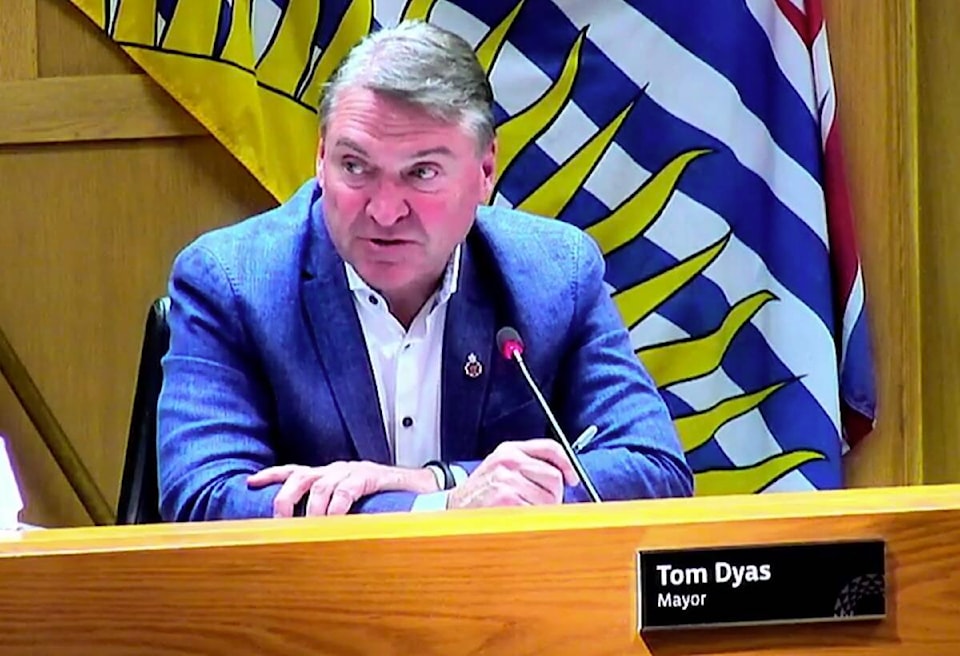On Aug. 15, twenty years — almost to the day — after the start of the 2003 Okanagan Mountain Park fire, flames from the McDougall Creek wildfire ignited our city’s skyline and quickly reminded us of the power of both wildfire and our regional emergency program.
More than 500 firefighters and 100 RCMP officers from more than 50 cities and towns joined forces with the Kelowna Fire Department, West Kelowna Fire Rescue, Lake Country Fire Department, North Westside Fire Rescue, BC Wildfire Service, Kelowna RCMP and Bylaw Services to execute an unprecedented, coordinated response.
While there will always be lessons to be learned in any emergency response, I am truly humbled by what was, and still is being, accomplished by the incredible work of our first responders and emergency operations centre. While a strong emergency response program is key, in the wake of a crisis that threatened lives and destroyed people’s homes, we all want to know what we can do to minimize the risk of wildfire in our community in the future.
First and foremost, we must recognize that the intensity and sheer number of wildfires we’ve seen across Canada and beyond are what many are now calling a climate change wake-up call, and one of the many reasons why climate/environment is one of six Council priorities. From the way we travel, to the electricity we use, and the food we eat, we all have a role to play in helping to limit climate change. Because, as temperatures rise, so too will the size, frequency and severity of wildfires.
Wildfire risk reduction is also top of mind in the community. Fuel mitigation treatments reduce the amount of available fire fuels in our natural areas, which plays a significant role in our ability to manage wildfire as safely and as quickly as possible. Over the past five years, the City has actioned over 100 hectares of fuel mitigation treatments on city-owned land, including reducing the amount of woody debris on the forest floor, thinning trees where necessary, and removing the lower limbs of trees to help keep fire from climbing into the canopy.
The success of fuel mitigation, including work done in Wilden during this fire and earlier in the season on Knox Mountain, speaks to the importance of proactive treatment and the need to look at all the different ways it can be accomplished—including securing ongoing, long-term funding and the way we explore new solutions, such as prescribed burns or the use of animals for grazing in key areas.
Residents can also make a critical difference by visiting kelowna.ca/firesmart to learn how to FireSmart their homes and take advantage of the City’s free community chipping program. Frontline fire fighters 2 said the homes and areas that were FireSmart made an integral difference in their ability to fight the recent fire safely and save properties.
New subdivisions in Kelowna are subject to review against Wildfire Hazard Development Permit guidelines which are reviewed by professional foresters. Developers are required to perform fuel modification and new single family lots created in fire hazard areas have maintenance obligations registered on their land title related to building construction and property maintenance in accordance with Fire Smart guidelines.
The Provincial Community Resiliency Investment (CRI) Program and 2022–2026 Community Wildfire Resiliency Plan, which contains over 40 recommendations from standardizing fuel management to how we build our communities, have been integral to completing wildfire prevention activities that have and will continue to reduce risk for our community especially as we face extreme fire and weather conditions.
The CRI program is a provincial funding program administered through the Union of BC Municipalities (UBCM) to provide funds for communities to plan and implement actions to reduce wildfire risk. Through the program over the last five years, we have been awarded $730,000, which has supported a variety of important FireSmart and mitigation initiatives throughout the community.
This year we were also successful in receiving a federal grant of $132,000 for ecological restoration and fuel management.
As we return to normal, post wildfire, the City will be assessing impact to City property, as well as whether any intervention required to support a healthy regeneration of the area. In addition, the regional emergency program will be looking at lessons learned to apply to future events in our region. I am pleased to see conversations occurring at both the federal and provincial levels regarding resiliency and response and welcome Premier Eby’s emergency response task force announced just last week.
We will also reflect on the depth of our city’s spirit and unity through this event. It got us through a crisis and will undoubtedly be the key to achieving our collective community goals and vision for an inclusive, welcoming, prosperous and sustainable future.
READ MORE: Evacuation alerts, orders come down for fire west of Peachland
@thebrittwebster
brittany.webster@blackpress.ca
Like us on Facebook and follow us on
